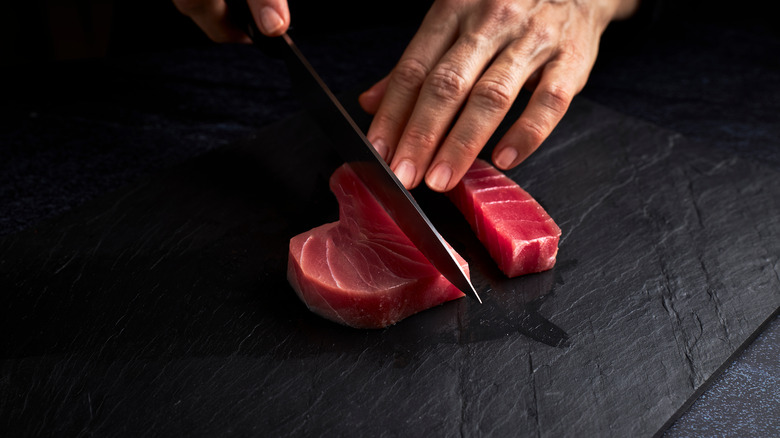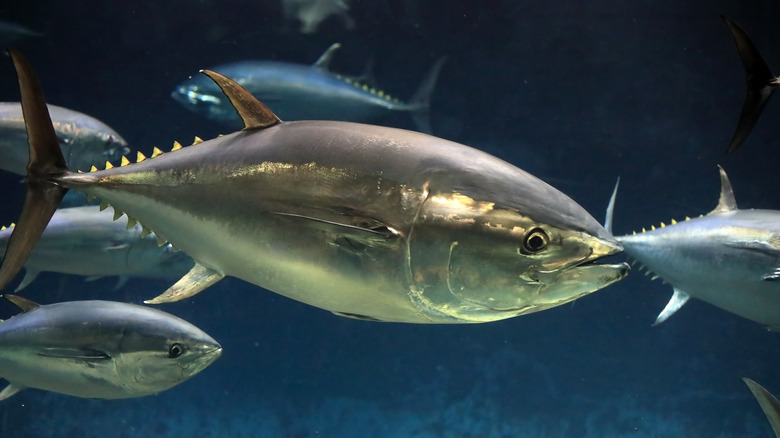Why Bluefin Tuna Is Considered The Best Tuna Variety By Many
In case you haven't been acquainted, meet bluefin tuna, the luxurious seafood superstar. According to Fishing Booker, the bluefin is prized for its delicious meat, and it comes with a price tag of royal proportions. Until the 1970s, says The New Yorker, fishmongers didn't so much as bat an eye at the good old bluefin, often selling the delicacy for less than one dollar per pound. Today, though, a single piece of bluefin sashimi at Nobu Chicago runs for $20, and it gets even pricier. In 2013, a single 489-pound bluefin tuna sold at auction in Tokyo for roughly $1.76 million, per NBC News, the same year that the National Oceanic and Atmospheric Administration (NOAA) first determined the bluefin tuna population to be overfished.
Luckily, bluefin is no longer listed in the U.S. Fish & Wildlife Service's endangered species list. While Bluefin tuna's population numbers remain on the low side, it's once again safe to catch them under the protection of reduced fishing rates. Conservation measures have been actively implemented by commercial fisheries (via Federal Register). But, bluefin is so irresistibly delicious that even an "endangered" status didn't stop the global sushi market from hunting them in years past. Michelin-starred sushi restaurant and celebrity haunt Nobu was embroiled in controversy for continuing to sell bluefin even while the fish was on the endangered species list in the early 2000s, via The Guardian. To sushi fans, it's that good. So, what's all the hype about?
Born to be a delicacy
Per Fishing Booker, there are three types of bluefin: Atlantic, Pacific, and Southern. The Atlantic bluefin is the biggest type, weighing up to 2,000 pounds. Southern Bluefin is the smallest type, and even they can hit 570 pounds. As a whole, bluefin is the largest species of tuna, says the World Wildlife Foundation, with average lengths of 6-10 feet. Visually, bluefin tuna meat is darker than any other type of tuna, says Foods Guy. But, the main characteristic that sets bluefin apart is its legendary fat content — the highest of any tuna species. Combined with the fish's size, this makes for massive, melt-in-your-mouth fatty filets of tuna steak.
However, all these accolades don't come without a catch. The one hurdle to bluefin's enduring place in the demand-heavy market isn't size or longevity — Fishing Booker says Southern bluefins can live up to 40 years! The issue is spawn time. Just one Atlantic bluefin can lay up to 540 million eggs — but, they don't start laying those eggs until around the age of eight. When the fish are caught before reaching sexual maturity, the population issue can escalate pretty quickly. That's why it's important to treat the bluefin as the special, occasional delicacy of the fine-dining world that it is, and to practice responsible, sustainable consumerism so foodies can enjoy bluefin for generations to come. (After all, it really is that good.)

